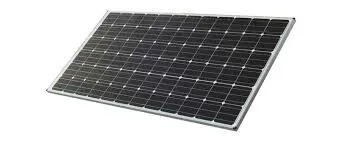Premium Solar Panels - Efficient and Sustainable Energy Solutions
Understanding Solar Panel Dimensions A Key Factor in Your Solar Energy System
As the demand for renewable energy sources continues to grow, solar panels have emerged as one of the most popular choices for harnessing sunlight to generate electricity
. When considering the installation of a solar energy system, one of the critical aspects to take into account is the dimensions of the solar panels. Understanding solar panel dimensions not only helps in evaluating the available space but also influences the overall efficiency and energy output of the system.Solar panels are available in various sizes and shapes, and their dimensions can significantly impact how many panels can fit on a roof or property. The most common size for residential solar panels is approximately 65 inches by 39 inches (1.65 meters by 1 meter), resulting in a total area of around 17.6 square feet (1.64 square meters) per panel. However, there are also larger panels designed for commercial applications, which can measure up to 77 inches by 39 inches (1.96 meters by 1 meter). The larger surface area of these panels allows for higher energy production, making them ideal for businesses with larger energy needs.
The efficiency of solar panels is often linked to their dimensions. Typically, larger panels can generate more electricity because they have a greater surface area to absorb sunlight. However, efficiency also depends on the technology used in the panel construction. High-efficiency panels, although smaller, can produce more energy per square foot compared to standard panels. Therefore, when evaluating solar panel dimensions, it is essential to consider both the physical size and the efficiency rating of the panels.
solar panel dimensions

When planning a solar installation, the available space is crucial. Homeowners must measure their roof area to determine how many panels can be accommodated. Factors such as the angle of the roof, potential shading from trees or nearby buildings, and local building codes will also play a role in this decision. In cases where roof space is limited, opting for high-efficiency panels might be the best solution, as they require less space while still providing sufficient energy production.
Moreover, the dimensions of the panels influence not only the installation process but also the aesthetics of the solar energy system. Some homeowners prefer sleek, low-profile designs that blend seamlessly with their roofs, while others may prioritize maximizing energy production, leading to a more prominent panel installation. Balancing aesthetics with functionality is an essential consideration in any solar project.
In conclusion, solar panel dimensions are a critical factor in the efficiency, installation, and overall performance of solar energy systems. Homeowners and businesses alike should carefully evaluate their space and energy needs when selecting solar panels. By understanding the implications of panel sizes, individuals can make informed choices that maximize their renewable energy production while fitting seamlessly into their available space. As technology continues to evolve, we can expect further innovations in solar panel designs, leading to even more effective solar solutions in the future.
-
Unlocking Energy Freedom with the Off Grid Solar InverterNewsJun.06,2025
-
Unlock More Solar Power with a High-Efficiency Bifacial Solar PanelNewsJun.06,2025
-
Power Your Future with High-Efficiency Monocrystalline Solar PanelsNewsJun.06,2025
-
Next-Gen Solar Power Starts with Micro Solar InvertersNewsJun.06,2025
-
Harnessing Peak Efficiency with the On Grid Solar InverterNewsJun.06,2025
-
Discover Unmatched Efficiency with the Latest String Solar InverterNewsJun.06,2025







